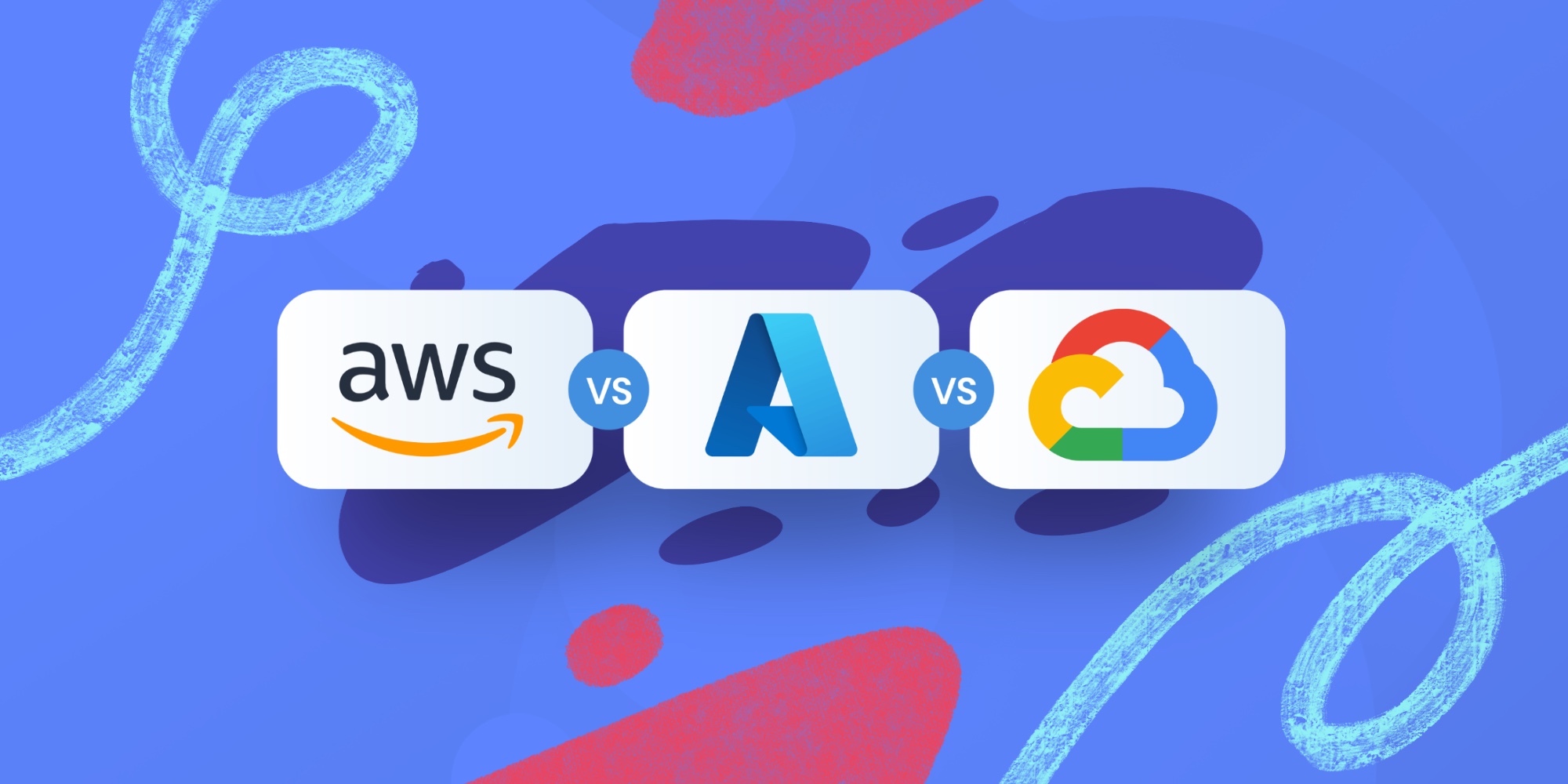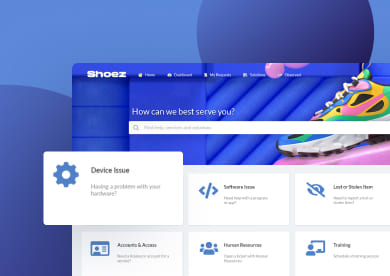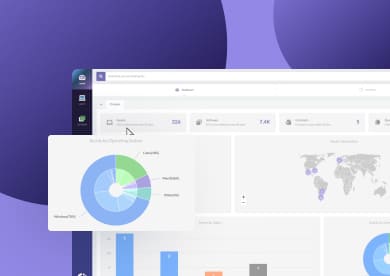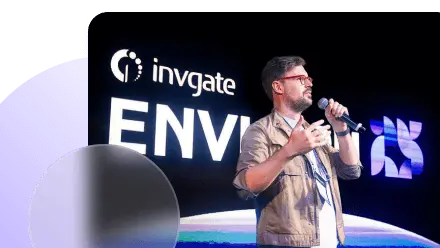Asset Management integration can mean different things depending on the context. In this article we use it to describe the process of connecting your Asset Management strategy with systems, processes, and tools to expand its reach and impact.
In practice, this often means linking your Asset Management software with other applications to maximize its usefulness and unlock new possibilities for users. It’s not a minor detail. According to a G2 study, integration capabilities are a decisive factor in software purchasing decisions, ranking even higher than ease of use and cost.
In the following sections, we’ll look at what Asset Management integration really is, the key integrations every tool should offer, and some best practices for putting them into action.
What are Asset Management integrations?
Asset Management integrations are the connections that allow an Asset Management platform to exchange data and workflows with other tools, extending its functionality and enabling automation across processes.
These integrations can take many forms depending on the scope. In this article, we focus on IT Asset Management (ITAM) integrations, which link ITAM software with complementary applications to improve visibility, automate tasks, and enhance the user experience.
Why is integrated Asset Management important?
Having an integrated Asset Management is important because it eliminates data silos and ensures that information about assets flows seamlessly across tools and processes.
This not only improves accuracy and efficiency, but also helps organizations make better decisions, reduce risks, and unlock more value from their Asset Management strategy.
5 benefits of integrating your IT Asset Management software
Integrating your IT Asset Management software with other tools doesn’t just make life easier for IT teams, it multiplies the value of your entire ITAM strategy.
By connecting your platform with IT Service Management (ITSM), discovery, security, financial, and collaboration tools, you can achieve gains that go far beyond asset tracking.
- Centralized visibility and data accuracy – integrations ensure asset data stays consistent and up to date across all platforms, reducing errors and giving IT teams a reliable single source of truth.
- Faster issue resolution – linking ITAM with ITSM tools gives support teams instant access to asset details during incidents or requests, which means faster troubleshooting and less downtime.
- Stronger security and compliance – Identity and Access Management (IAM), security, and monitoring integrations help enforce access controls, automate patching, and meet regulatory requirements.
- Cost control and smarter budgeting – financial integrations provide insights into asset costs, depreciation, and renewals, helping organizations optimize spending and avoid compliance fines.
- Workflow automation and efficiency – APIs and automation tools streamline routine tasks like provisioning, updates, or lifecycle tracking, freeing up IT staff for higher-value work.
10 must-have IT Asset Management integrations to expand your software capabilities
There are several key categories of IT Asset Management integrations, each serving a different purpose. Below, we break them down to help you understand how they enhance IT operations and overall business performance.
#1. ITAM integration with ITSM software
ITAM integration with ITSM software connects IT Asset Management platforms with IT Service Management tools to give IT teams complete visibility of assets when handling incidents, requests, or changes.
By having access to details like device configuration, ownership, and lifecycle data within the service desk, agents can troubleshoot faster, reduce downtime, and execute changes with fewer errors. These integrations ensure smoother IT operations by bringing asset context directly into daily support workflows.
Common examples include InvGate Service Management, which integrates natively with InvGate Asset Management, as well as Jira Service Management and ServiceNow, both of which can display asset information within tickets to improve efficiency and decision-making.
#2. ITAM integration with discovery and monitoring software
ITAM integration with discovery and monitoring software keeps inventories accurate by automatically detecting and tracking assets across the environment. This removes manual work, eliminates blind spots, and ensures teams always have a reliable, real-time asset record.
Examples include integrations with AWS, Azure, and VMware to track virtual infrastructure, or with Jamf, Microsoft Intune, and Google Workspace to manage endpoints and mobile devices. These connections give IT teams complete visibility to prevent risks and optimize usage.
#3. ITAM integration with Identity and Access Management (IAM) & directory services software
ITAM integration with Identity and Access Management (IAM) and directory services strengthens security by connecting asset data with authentication and access controls.
This ensures that only the right people can use or configure specific devices, applications, or services, reducing the risk of unauthorized access or data breaches.
Examples include integrations with Microsoft Active Directory, Microsoft Entra ID, and Okta, which automate provisioning and deprovisioning, enforce role-based policies, and keep asset usage aligned with corporate security requirements.
#4. ITAM integration with remote desktop tools
These integrations let IT teams remotely access, manage, and troubleshoot assets without needing physical access. They speed up support, cut downtime, and are especially valuable for distributed workforces.
Examples include AnyDesk, TeamViewer, and Microsoft Remote Desktop, which connect directly with ITAM platforms to enable faster issue resolution.
#5. ITAM integration with Mobile Device Management (MDM) & Device Management software
Mobile Device Management (MDM) integrations connect ITAM platforms with tools that monitor, secure, and control mobile and endpoint devices. They help enforce policies, automate updates, and protect data by remotely wiping lost or stolen assets.
Examples include Microsoft Intune, Jamf, and VMware Workspace ONE, which extend ITAM’s reach to every device across the organization.
#6. ITAM integration with cloud provider services
Cloud integrations connect ITAM platforms with cloud environments to manage virtual machines, storage, and cloud-based assets. They provide visibility into usage, costs, and compliance while simplifying hybrid infrastructure management.
Examples include AWS, Microsoft Azure, and Google Cloud, which integrate with ITAM tools to track resources and optimize performance.

#7. ITAM integration with security & compliance software
Security and compliance integrations connect ITAM platforms with tools that detect vulnerabilities, enforce policies, and monitor risks. They help automate patching, strengthen protection, and ensure regulatory compliance.
Examples include integrations with endpoint security tools, vulnerability scanners, and compliance tracking software to keep assets secure and audit-ready.
#8. ITAM integration with financial & procurement software
These integrations link ITAM with financial and procurement tools to track costs, manage budgets, and streamline purchases. They ensure accurate reporting and support smarter spending decisions.
Examples include ERP platforms, SAP, Oracle, and QuickBooks, which connect asset data with financial workflows for better cost control.
#9. ITAM integration with collaboration & communication tools
These integrations connect ITAM with communication platforms to improve coordination, automate notifications, and share real-time asset updates. They keep teams aligned and speed up workflows.
Examples include Microsoft Teams, Slack, and Asana, which bring asset information into daily collaboration channels.
#10. ITAM integration with APIs & custom connections
API and custom integrations let organizations build tailored connections between ITAM and other tools. They enable automation, data syncing, and workflow enhancements beyond standard out-of-the-box options.
Examples include custom-built APIs and Webhooks, which adapt ITAM platforms to unique business requirements.
6 Asset Management integrations best practices
Integrating ITAM software effectively requires more than just connecting tools — it’s about building a reliable, secure, and scalable ecosystem. Below are some best practices to keep in mind when working with integrated Asset Management systems:
- Start with clear objectives – define what you want to achieve (e.g., better visibility, cost control, stronger security) before adding integrations.
- Prioritize native and API-based integrations – they are more reliable, easier to maintain, and offer real-time data syncing compared to custom file transfers.
- Align with governance and compliance requirements – ensure integrations follow security policies, role-based access rules, and audit standards.
- Automate wherever possible – use integrations to remove repetitive tasks like provisioning, patching, or updates so IT teams can focus on strategic work.
- Monitor and review regularly – integrations should be checked and updated as systems evolve to avoid data gaps, errors, or security risks.
- Involve stakeholders across teams – IT, finance, security, and operations should collaborate when deploying integrated asset management systems to maximize value.
Using InvGate Asset Management as your ITAM software

InvGate Asset Management is no-code ITAM tool designed to seamlessly integrate with your existing IT ecosystem, ensuring that organizations can centralize their processes, automate workflows, and enhance security.
With a broad range of integrations covering directory services, ITSM, cloud providers, and more, InvGate provides a comprehensive, easy-to-use solution that supports IT teams in managing their assets efficiently. Below are the key integration categories that make InvGate Asset Management the best choice:
- Seamless integration with directory services.
- Strong Identity and Access Management (IAM) support.
- Full ITSM integration for better Incident Management and Asset Management.
- Remote desktop tools for quick IT support.
- Device and Mobile Device Management (MDM) compatibility.
- Cloud provider integrations for hybrid IT environments.
- Hypervisor integrations for Virtual Machine Management (VMM).
- Contracts & warranty tracking for better Asset Lifecycle Management.
- Collaboration & cloud productivity integrations.
- Open API for custom integrations.
Connect our solutions with the apps you use every day.
Explore InvGate's integrations

#1. Seamless integration with directory services
InvGate Asset Management integrates seamlessly with your existing Microsoft infrastructure, including Azure AD, Active Directory, and Office 365. This ensures smooth user provisioning and authentication, enhancing both security and IT support efficiency.
By intertwining device data with user profiles, organizations gain a unified IT asset perspective, allowing for precise asset tracking and streamlined management. Additionally, Single Sign-On (SSO) capabilities strengthen security measures, simplify compliance adherence, and reduce the burden of Password Management. With this integration, ITAM workflows become more efficient, eliminating manual data entry and ensuring your ITAM strategy scales with your organization's growth.
#2. Strong Identity and Access Management (IAM) Support
Security and access control are crucial in IT Asset Management. InvGate-Okta integration and InvGate-Azure integration enable Single Sign-On (SSO), user provisioning, and centralized IAM.
These integrations help organizations enforce role-based access controls, improve authentication, and enhance security compliance.
#3. Full ITSM integration for better Incident and Asset Management

A strong connection between ITAM and ITSM enhances issue resolution and IT support. First of all, InvGate Asset Management integrates natively with InvGate Service Management, allowing agents to attach assets to tickets, automate workflows, and generate insightful reports.
Additionally, ServiceNow integration and Jira Service Management integration ensure that IT teams can manage their service operations efficiently.
#4. Remote desktop tools for quick IT support
For IT teams managing distributed workforces, remote access is essential. InvGate Asset Management connects with TeamViewer, AnyDesk, and Windows Remote Desktop, allowing technicians to remotely access and troubleshoot devices without physical intervention. This improves response times, reduces downtime, and enhances IT support capabilities.
#5. MDM Compatibility
InvGate Asset Management extends asset tracking and monitoring to mobile and endpoint devices through integrations with Microsoft Intune, Google Workspace, and Jamf.
These connections help organizations manage software installations, enforce security policies, and maintain compliance across all devices.
#6. Cloud provider integrations for hybrid IT environments
Organizations leveraging cloud services can seamlessly manage their cloud-based assets with InvGate’s integrations with Amazon Web Services (AWS) and Microsoft 365.
These integrations track virtual machines (VMs), monitor cloud resource usage, and strengthen security compliance, ensuring that both on-premise and cloud-based assets are visible within a single ITAM platform.
#7. Hypervisor Integrations for Virtual Machine Management
 For organizations running virtualized environments, InvGate Asset Management integrates with Hyper-V and VMware to provide visibility into hypervisors and VMs. This allows IT teams to track, manage, and optimize their virtual infrastructure within the ITAM platform.
For organizations running virtualized environments, InvGate Asset Management integrates with Hyper-V and VMware to provide visibility into hypervisors and VMs. This allows IT teams to track, manage, and optimize their virtual infrastructure within the ITAM platform.
#8. Contracts & warranty tracking for better Asset Lifecycle Management
Managing warranties and contracts is crucial for IT asset lifecycle management. InvGate Asset Management integrates with Dell, HP, Asus, and Toshiba to automate warranty tracking and ensure devices remain covered under support agreements. This helps organizations reduce unexpected repair costs and optimize asset replacements.
#9. Collaboration & cloud productivity integrations
Beyond IT assets, organizations rely on cloud-based collaboration tools to manage IT operations. InvGate Asset Management integrates with Microsoft 365, enabling teams to track Exchange, OneDrive, SharePoint, and Teams usage within their asset management system. This provides better visibility into cloud-based software licenses and user activity.
#10. Open API for custom integrations
For organizations with unique requirements, InvGate Asset Management offers a powerful API that enables integration with other applications. The API follows JSON-API standards and OAuth2.0 authentication, allowing businesses to automate data synchronization, generate reports, and enhance workflows based on their specific needs.
Final thoughts
Integrations are essential for a modern ITAM solution, enabling automation, security, and efficiency. By connecting ITAM with ITSM, IAM, cloud providers, and remote access tools, organizations can streamline operations and optimize asset lifecycles.
With its extensive integration capabilities, InvGate Asset Management provides a seamless, future-ready solution to centralize asset data, enhance security, and improve IT workflows. Invest in the right integrations and maximize your ITAM potential. Try InvGate Asset Management with our 30-day free trial!















